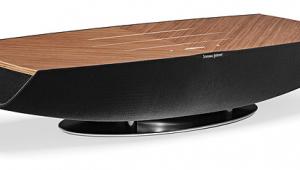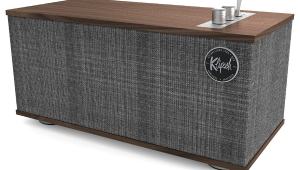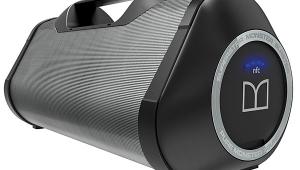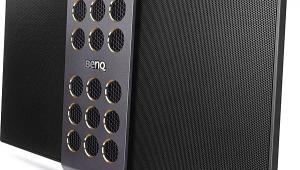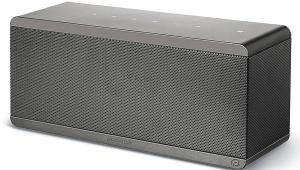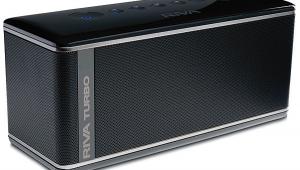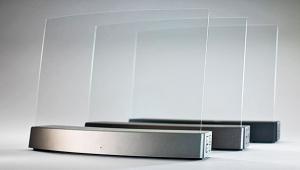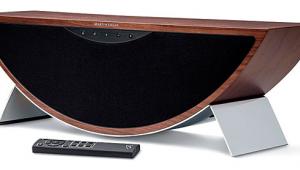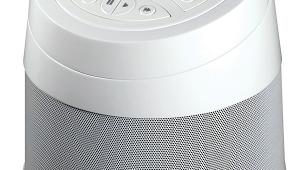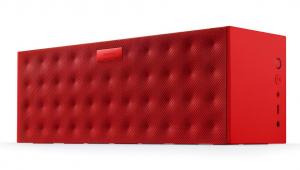Review: Outdoor Technology Turtle Shell wireless speaker

When summer rolls around, we all go mobile. We drink morning coffee out on the patio, surf while sitting by the pool, and might even do an overnighter in a treehouse. Of course, all of those activities are accompanied by music, and we also need to stay connected for incoming calls.
Fortunately, there are about a thousand portable speakers on the market that fit the job description. You can list as many requirements as you want, and you'll still find several models that fulfill all of your criteria. Size, color, shape, battery life, fidelity, price - you name it - you'll find just the right product. With that in mind, if you are looking for a high-tech looking speaker that's named after a reptile, I've got just the speaker for you.
The Turtle Shell is a wireless portable speaker from Outdoor Technology. Its name is easily envisioned; it is about the size and shape of a box turtle. Very unlike any turtle I've ever seen is the Turtle's angular, almost Stealth-like speaker grille. It conceals a pair of up-firing drivers. Firing downward on the chassis bottom is a woofer port. Four rubber feet elevate the chassis from whatever it's placed on. The stereo amplifier is rated at 2 watts per channel. It's available in black, white, red, blue, green, pink and sea foam. Price is $150.
The Turtle is primarily designed to receive its audio signal from a source via Bluetooth pairing. However, there is also a jack for wired audio. A micro USB port accepts power via a USB AC adapter (included). These connectors are placed under a rubber cover that is supposed to be water and dust resistant. There is exactly one switch and three buttons. The switch is for power; it flashes blue while paired, and flashes red for low battery. A multifunction button is used for play/pause, answer/hang up, and pairing. Two more buttons provide volume and track up/down. Finally, there is a built-in microphone; it only works when connected via Bluetooth.
Most people will simply place the Turtle on a flat surface. However, there is also a cleat so the chassis can be hung from a hook. And, there is a threaded camera mount; while you probably won't put it on a tripod, it can be used to secure the Turtle to an optional handlebar mount. Bombshell babes are also optional (see photo).
Operation is simple. You pair the Turtle with your Bluetooth device by pressing and holding the multifunction button. The power switch blinks red and blue while pairing is completed. You use your source device to select the Turtle and play tunes. Some numbers: It takes about 2.5 hours to fully charge the Turtle. It plays for about 8 hours on a charge. The Bluetooth range is up to 30 feet. The Turtle measures about 5.5 x 4 x 2 inches and weighs about 12 ounces.
Sound quality was, as expected from such a small device, limited. Midrange fidelity was clear and crisp and particularly acceptable for vocals. A typical pop sound, with loud vocals, cut through pretty well, but you won't be dancing to the beat. Bass port notwithstanding, the low-frequency response was rolled off. If you want more bass, you'll need a bigger and heavier speaker. The high-frequency response was decent and provided a good sense of ambient space around the speaker. Because of its small size, stereo separation was very confined. In other words, sound quality was typical for a small portable speaker.
As with many other devices with a rubber plug, after awhile this one refused to stay put. The little bugger kept popping out of its recess, thus defeating any water resistance it might have provided. Surely the U.S. military or NASA or someone has solved this problem with its electronics devices, and consumer companies can borrow that?
I'm not sure why, but in spite of a plethora of interesting choices, I liked the Turtle. Maybe it's because I had pet turtles when I was a kid. In any case, I got a real kick out of its unique, minimalist styling and operation. The Turtle's fidelity won't get it to Carnegie Hall, but it will suffice for summer fun activities.
Measurements
Frequency response
287 Hz to 20 kHz ±10.3 dB on-axis, ±11.6 dB avg 0-30°
To measure the quasi-anechoic frequency response of the Turtle Shell, I set it atop a 2-meter stand and placed the microphone at a distance of 1 meter. (Quasi-anechoic measurements eliminate reflections from surrounding objects to simulate measuring in an anechoic chamber.) I placed the Turtle Shell flat on the top of the stand, and positioned the measurement microphone above it at an angle of about 45°, to simulate the sound you'd get with the Turtle Shell mounted on a bike or placed on a table. I measured the bass response using close-miking technique. To create the graph shown here, I spliced the bass response below 200 Hz to the average of quasi-anechoic measurements of the left channel only taken at 0°, ±10°, ±20°, and ±30°. I used a Clio FW analyzer in MLS mode for the quasi-anechoic measurements and log chirp mode for ground plane, feeding test signals into the left channel of the Turtle Shell's 3.5mm line input. The quasi-anechoic measurements were smoothed to 1/12th octave. The blue trace shows the 0° on-axis response, while the green trace shows the averaged response.
The Turtle Shell's tiny drivers can't muster any real output below 300 Hz, making this a midrange/treble machine. That deep notch at 5 kHz is not the result of interference between drivers (I was feeding only the left driver), but probably because of an internal reflection off the rather thick grille. Fortunately, the notch is narrow enough that it won't be readily audible. Unlike the NYNE NB-200 and Soundmatters FoxL v2, two other Bluetooth speakers that can be easily bike-mounted, this one doesn't seem to have any real acoustical engineering going on.
-Brent Butterworth
